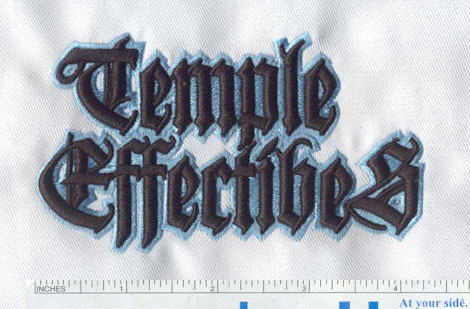Creating Embroidery Art with Metallic Threads: Shimmer and Shine
Embroidery has been a cherished art form for centuries, but there's something truly enchanting about adding a touch of metallic thread to your creations. Metallic threads bring an extra dimension to your embroidery, making your work shimmer and shine like no other. In this blog post, we'll delve into the world of metallic thread embroidery, exploring the types of metallic threads available, techniques for working with them, and some inspiring project ideas.
Types of Metallic Threads
Before you begin embroidering with metallic threads, it's essential to understand the different types available:
- Metallic
Floss: This is perhaps
the most common type of metallic thread. It's composed of a
metallic-coated polyester or nylon core, making it relatively easy to work
with. Metallic floss comes in various sizes, from very fine to heavy, and
is suitable for both hand and machine embroidery.
- Metallic
Cord: Metallic cord is
thicker and more textured than metallic floss. It's often used for
outlining and creating bold, raised lines in embroidery.
- Metallic
Ribbon: Metallic ribbon
is flat, which creates a unique texture when used in embroidery. It's
excellent for adding decorative elements to your designs.
- Metallic Blends: Some metallic threads come in blended forms, where the metallic thread is twisted with other types of threads like silk or cotton. These blends offer a combination of textures and colors.
Techniques for Working with Metallic Threads
Working with metallic threads can be a bit tricky due to their unique properties. Here are some techniques to make the process smoother:
- Use
the Right Needle: Choose
a needle with a larger eye to accommodate the metallic thread without
causing friction. A larger eye will reduce the chances of the thread
breaking during stitching.
- Thread
Conditioner: Applying
thread conditioner or wax to your metallic thread can help reduce friction
and prevent it from unraveling.
- Thread
Tension: Adjust your
thread tension when using metallic threads on a sewing machine. You may
need to loosen the tension slightly to prevent breakage.
- Slow
Down: When machine
embroidering with metallic threads, slow down the machine's stitching
speed. This allows for more precise control and reduces the risk of thread
issues.
- Thread
Path: Be mindful of the
thread path, especially in machine embroidery. Ensure the metallic thread
doesn't wrap around any moving parts, which can lead to breakage.
- Needle Position: Position your needle down into the fabric before beginning to stitch. This reduces the likelihood of the metallic thread catching on the fabric's surface.
Project Ideas for Metallic Thread Embroidery
Now that you're equipped with the knowledge of metallic threads and the techniques for working with them, let's explore some creative project ideas:
- Holiday Ornaments: Metallic
threads add a touch of elegance to holiday ornaments. Stitch intricate
snowflakes or festive motifs for the perfect seasonal decorations.
- Wedding Accessories: Metallic
thread embroidery can make wedding accessories like ring pillows, garters,
and even the wedding dress itself shine with elegance.
- Fashion Embellishments: Update
your wardrobe by adding metallic thread embroidery to plain denim jackets,
jeans, or tote bags. It's a great way to create unique, personalized
fashion items.
- Home Decor: Metallic
threads can be used to embellish throw pillows, table runners, or wall
art, adding a touch of glamour to your living space.
- Monogrammed Gifts: Personalized
gifts are always appreciated. Create monogrammed hand towels, napkins, or
even custom metallic thread-embroidered phone cases.
- Bookmarks: Design beautiful
bookmarks with metallic thread embroidery. They make thoughtful and
elegant gifts for book lovers.
- Jewelry: Get creative by using metallic threads in jewelry-making projects. Embroider pendant designs or create embroidered beadwork.
Tips for Success
To ensure your metallic thread embroidery projects turn out stunning, keep these tips in mind:
- Practice:
If you're new to working
with metallic threads, practice on a scrap piece of fabric before starting
your main project.
- Stabilize:
Always use an
appropriate stabilizer when working with metallic threads, whether by hand
or machine.
- Patience:
Be patient and take your
time. Metallic threads can be finicky, but the results are worth the
effort.
- Storage: Store your metallic threads carefully,
away from direct sunlight and moisture, to prevent tarnishing.
- Experiment: Don't be afraid to experiment with different stitch patterns and combinations of metallic and non-metallic threads for unique effects.
Conclusion
Embracing the world of metallic thread
embroidery opens up a realm of possibilities for creating shimmering and
eye-catching artwork. Whether you're embellishing clothing, crafting ornaments,
or adding a touch of elegance to your home decor, metallic threads are sure to
make your embroidery projects stand out. By understanding the types of metallic
threads, employing the right techniques, and practicing patience, you can
master this art form and bring a touch of glamour to your creative endeavors.
So, grab your metallic threads and start stitching to create truly dazzling embroidery art.



